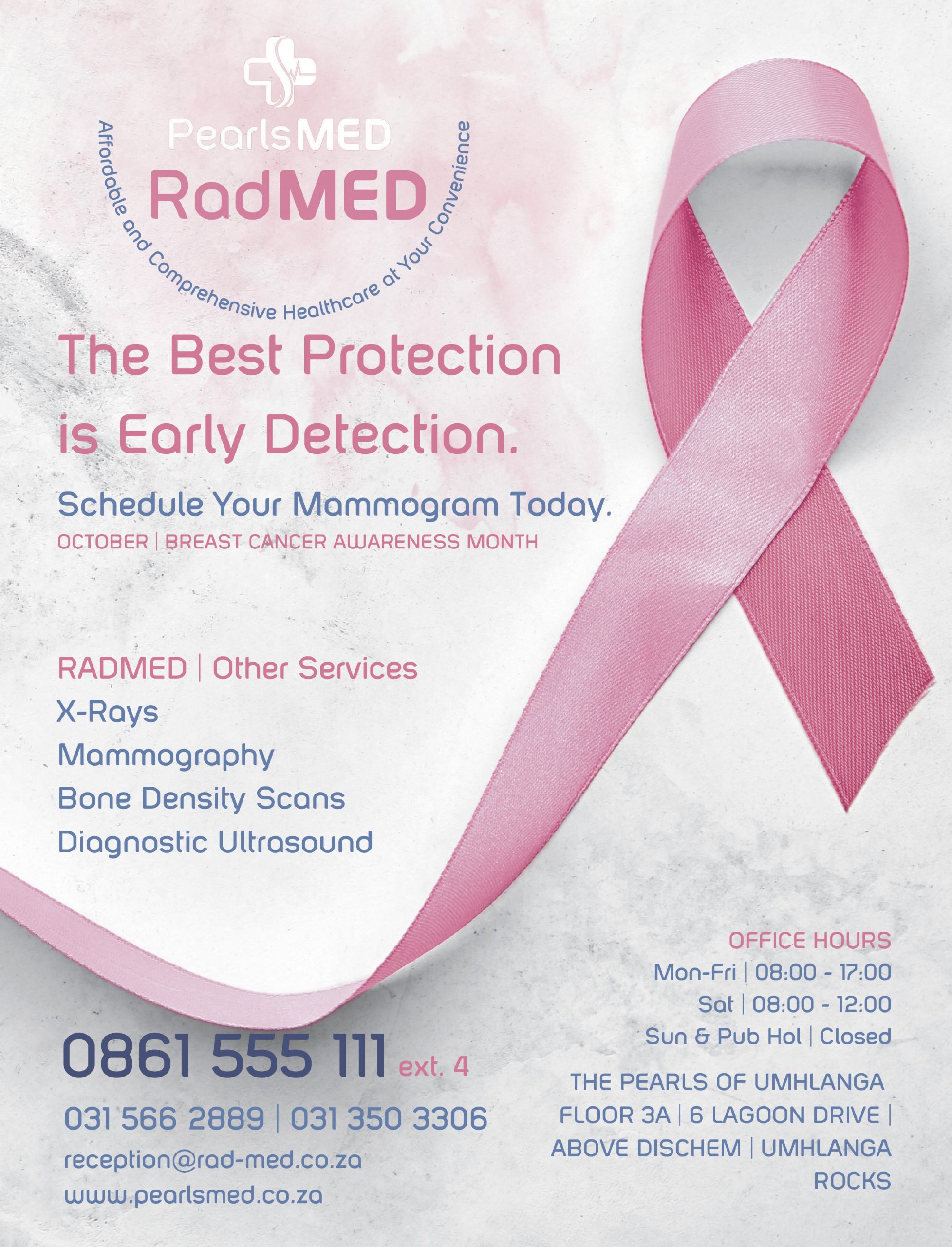October is Breast Cancer Awareness Month. Estelle Van Der Wath, a radiographer at RadMED in Umhlanga, answers some frequently asked questions about the disease.
What can I do to reduce my risk of breast cancer?
• Maintain a healthy weight. If your weight is healthy, work to maintain that weight. If you need to lose weight, ask your doctor for help.
• Limit your intake of red meat, animal fats and processed meats – this reduces your overall risk of cancer. Rather incorporate more plant-based proteins like beans, lentils and nuts.
• Be physically active. The World Health Organisation (WHO) recommends at least 150-300 minutes of moderate or 75-150 minutes of vigorous activity per week.
• Choose not to drink alcohol, or drink alcohol in moderation.
• Breastfeed your children, if possible. The longer you breastfeed, the greater the protective effect.
• When many people think of their family history of breast cancer, they tend to focus on their maternal lineage. But it’s just as important to look on your father’s side, too.
If you have a family history of breast cancer or you carry a breast cancer–associated gene mutation, talk to your doctor about other ways to lower your risk.
• Stop smoking and vaping – especially if you have a family history of breast cancer.
How often should I go for a screening?
• Breast self-examination (BSE) should be done monthly on the seventh to tenth day of your cycle. Post-menopausal women should do a BSE on a monthly basis.
• All women over the age of 20 should have a clinical breast examination done by a qualified practitioner as part of their annual check-up.
• Screening mammograms should be done annually by all women over the age of 40 or from the age of 35 if you have a family history of breast cancer or an increased risk.
• Women over the age of 55 can opt to have a screening mammogram done every 2 years.
What does a breast cancer screening involve?
• Screening means checking the breast for early changes that are not clinically obvious.
This would involve a mammogram and/or ultrasound of the breast. It is of benefit to have your previous imaging available for direct comparison to identify any possible early differences.
• The mammogram involves taking four standard x-ray views of the breasts – two on either side. If a specific area is not seen well enough, additional views will be done.
• An ultrasound scan can be done to compliment the mammogram – especially in patients who have denser breast tissue.
• If any changes or suspicious areas are seen, further testing will be done.
• Diagnostic screening would mean that your practitioner has concerns about your clinical examination or that you have noticed a change on your self-examination. Any changes and/or lumps should be checked by a practitioner as soon as possible.



